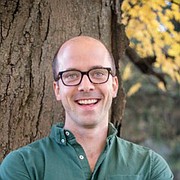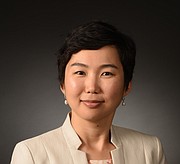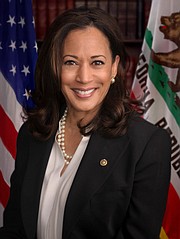Janet Yellen may soon become the first woman to lead the Treasury Department—about six years after shattering another glass ceiling at the top of the Federal Reserve.
She’s not alone in breaking down barriers in President-elect Joe Biden’s proposed new Cabinet. Michele Flournoy is the favorite to lead the Pentagon, while Biden named Avril Haines to be his director of national intelligence—if confirmed, they would be the first women in either of those positions. And that’s not to mention Kamala Harris, who on Jan. 20 will become the first woman vice president in U.S. history.
There’s often an expectation that busting these barriers—as women have been doing for many decades—will eventually lead to the kinds of systemic changes that will finally yield parity between men and women in leadership roles in government, the corporate world and beyond.
To understand these dynamics better, we analyzed the connections among the elites who govern many of the world’s most powerful companies and organizations. We wanted to see how many women and people of color had found their way to the center of these networks, which is a signal of how influential they are.
While Yellen and Harris represent progress, our results show it’s still largely a boys club.
Two Steps Forward, One Step Back?
Around the world, women are increasingly making their way into positions of power in disciplines like economics and finance that are notoriously sexist.
Yet despite notable achievements, such as at the International Monetary Fund, where both the present and previous heads have been women, the worlds of finance and business remain highly male-dominated.
Among big global corporations, women are rarely in top leadership positions. For example, only 37 of the companies listed among the Fortune 500 are led by women—and yet this is a record high. In the U.S., only 5% of CEOs in the S&P 1500 are women.
The Inner Circle
Why are so few women breaking through?
We thought the answer might lie in looking at global elites. These leaders have power—not only because they run organizations, but because they often have many connections to other elites.
In a paper published in November by the peer-reviewed journal Global Networks, we examined the racial and gender diversity among the elite leaders who govern about 100 of the most powerful organizations and companies in the world based on global rankings and size. Our list includes some of the world’s largest companies, such as Walmart and JP Morgan, several influential non-governmental organizations, such as Doctors Without Borders, Oxfam and Amnesty International, and international organizations of all kinds, such as the World Trade Organization and the World Economic Forum.
For each organization, we focused on the individuals who sat on their governing boards. These are the folks who make an organization’s most important decisions and determine who is ultimately in charge. We assembled a list of about 1,600 people who were on these boards in 2018. We then analyzed their ties to one another in terms of belonging to the same boards across organizations.
In all, we found about 9,000 ties that connected these leaders, creating a massively complex global network. By adding up these ties, we were able to reveal a snapshot of how leaders relate to one another and—more importantly—which leaders were at the periphery of the network and which were at its center.
We wanted to determine whether many women or people of color have made it to the center or core of this global network of elites or whether they mostly remained at the periphery. Studies of network power have found that it’s not enough to be a part of this network to have influence; one must be highly connected within it as well.
We found that women made up about 25% of leaders in the network—but only 6% were women of color. Men of color made up about 21%. The other leaders were all white men, who made up over half of those in the network.
What was most striking to us, however, was how few women and people of color penetrated the highly interconnected inner circle. Just 15% were women and 10% were men of color. Very few were women of color. Yet the figure for white men in the inner circle jumps up to 75%.
Making Connections
This, of course, is just a snapshot.
We don’t know how it’s changed since or what it was 10 or 20 years ago. We are currently trying to chart how these dynamics evolve over time.
One thing we do know is that men tend to dominate the inner circle of these networks, and that’s likely allowing them to amass even more power and influence.
It’s not enough for women and people of color to make it to leadership positions; they also need to be able to tap into the center of power networks to ensure the progress represented by Yellen, Harris and Biden’s other Cabinet picks continues.
This piece was published in cooperation with The Conversation, an independent, nonprofit publisher of commentary and analysis, authored by academics on timely topics related to their research.
BIO: Kevin L. Young is an Associate Professor in the Department of Economics at the University of Massachusetts Amherst.His research has focused on global governance, the politics of financial regulation, social science methodology and the role of private business in shaping public policy. He earned his PhD from the London School of Economics in 2010, and previously was a Postdoctoral Fellow at the Niehaus Center for Globalization and Governance at Princeton University. Kevin is the author of Gridlock: Why Global Cooperation is Failing When We Need it Most (together with Thomas Hale and David Held), and has published in a variety of scholarly peer-reviewed journals such as Review of International Political Economy, Socio-Economic Review, Public Administration, Global Networks, Business and Politics, Global Policy, International Studies Quarterly and New Political Economy.
Tuugi Chuluun, PhD., CFA is a Travelers Scholar and an Associate Professor of Finance at Loyola University Maryland. Tuugi conducts research in corporate finance and international finance and has authored academic articles as well as an international finance textbook. She also holds the Chartered Financial Analyst designation. She served as the President of the CFA Society Baltimore and has served on the board of the society since 2013.
This column does not necessarily reflect the views of the JFP.
More like this story
- Sanders Surrogates Face Uphill Mississippi Battle In Candidate’s Absence
- After Mississippi Stops, 2020 Presidential Candidates Emerge, Patrick Out
- Hailing Biden and Harris Win, Jackson City Council Calls for Unity
- OPINION: Pelicia Hall and the Political Emptiness of 'Black Girl Magic'
- Finance Officials Face Global Economy Under Threat






Comments
Use the comment form below to begin a discussion about this content.
comments powered by Disqus